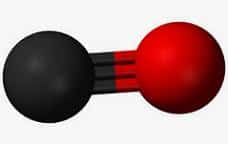Knowing the etymological origin of the two main words that give shape to the term carbon monoxide is the first thing we are going to do before entering fully into its meaning. Thus, we can establish the following:
-Monoxide was formed from the sum of several lexical components: the Greek word "monos", which means "one"; the Greek word "oxys", which is synonymous with "acid"; and the Latin suffix "-ido", which is used to indicate "quality."
-Carbon, for its part, comes from Latin. Specifically, it emanates from the term "carbo, carbonis", which can be translated as "coal".
A monoxide is an oxide that has a molecule with a single oxygen atom. Oxides , meanwhile, are compounds resulting from the combination of a metal or metalloid with oxygen.
Carbon , for its part, is a chemical element with a great presence in nature and with great relevance at a biological level. Its atomic number is 6 and its symbol, C.
From these definitions specific to the field of chemistry , we can analyze the concept of carbon monoxide . It is a very toxic gas that has the formula CO .
Also referred to as carbon dioxide , carbonaceous gas or carbon(II) oxide , it is usually generated from poor combustion of oil , coal, wood, gasoline, gas or other fuels. This means that cars, heaters , and ovens , among many other devices and machines, tend to produce carbon monoxide.
 It should be noted that carbon monoxide poisoning is a common cause of death in humans . When someone breathes carbon monoxide, this gas replaces oxygen in blood hemoglobin. The tissues, therefore, stop receiving the oxygen they need to survive.
It should be noted that carbon monoxide poisoning is a common cause of death in humans . When someone breathes carbon monoxide, this gas replaces oxygen in blood hemoglobin. The tissues, therefore, stop receiving the oxygen they need to survive.
In addition to everything indicated, we cannot ignore another series of interesting data about carbon monoxide, such as the following:
-It has no color or smell or taste.
-It is spoken of as the "silent enemy that attacks in winter." And annually thousands of people in the world die because of it by misusing stoves, heaters, fireplaces...
Carbon monoxide poisoning mainly affects children, pregnant women, the elderly and individuals who suffer from respiratory problems, heart problems or anemia, since they have a greater sensitivity. Its consequences, however, affect everyone: poisoning is even potentially fatal.
To minimize the possibility of suffering from carbon monoxide poisoning, it is important that a licensed or certified gas fitter periodically check the gas installations and connections, ensuring correct combustion.
To avoid carbon monoxide poisoning, another series of measures must be taken, such as ventilating the entire house daily, always ensuring that the flame of the device that emits it is blue, and never placing heaters in places that are not well ventilated or that are closed. However, it is also recommended to install a specific carbon monoxide detector in the home and periodically clean the exhaust ducts of both stoves and chimneys.
